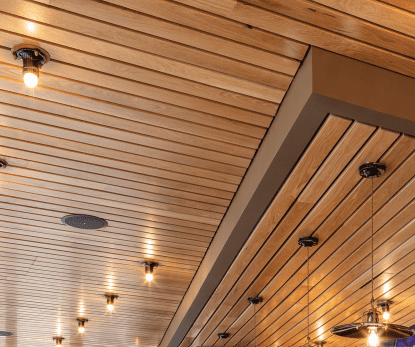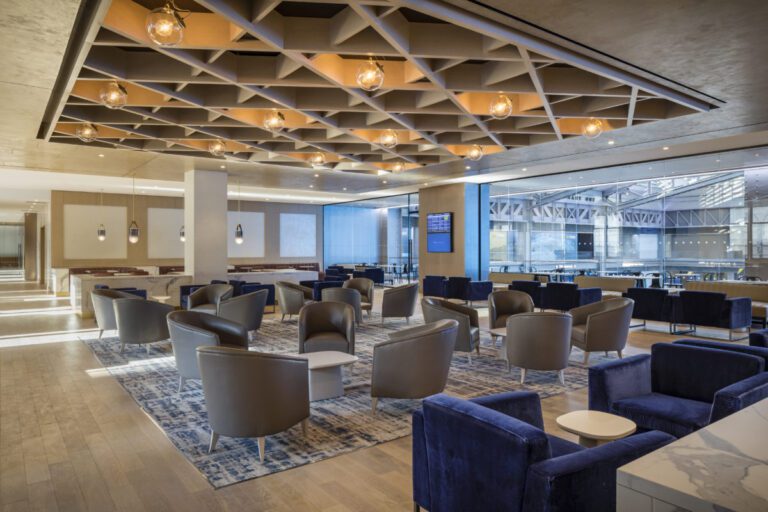Studies have shown that a clean, comfortable learning environment is more likely to promote educational success for students. From the youngest student in pre-kindergarten to the oldest student finally getting their high school diploma, receiving their coveted college degree, or simply attending continuing education courses, every learner deserves a space that encourages their educational success. Acoustical wood wall systems can help.
Most teachers strive to create a space that leads their students toward excellence, but those efforts should start long before teacher or student steps into the building. Learning is about far more than a degree, which is why it’s so important for educational facilities to be designed intentionally from the start, with the goal of creating an ideal learning environment for all who enter.
The Impact of Design in Educational Facilities
So what exactly does design have to do with education? A lot, it turns out.
Over the last decade, research has continuously proven that a “… building’s structural facilities profoundly influence learning. Inadequate lighting, noise, low air quality, and deficient heating in the classroom are significantly related to worse student achievement” (Cheryan, et al.). Because design directly impacts educational outcomes, it’s advised that school buildings have — at minimum — good lighting, good acoustics, good temperature, and good air quality.
Every great design vision deserves to be achieved; however, if your project happens to be an educational facility, then there are a few key things you need to keep in mind.
Design Impacts Health
Many schools hire cleaning companies to maintain the cleanliness of their buildings, yet sickness still runs rampant through student bodies. As a result, it’s not uncommon for a student to miss a week or more throughout the school year because they’re sick.
While it’s not possible to entirely eradicate sickness among school bodies, it is possible to design and build with students in mind, creating an environment where they can enjoy a healthy, successful school year.
When Indoor Advantage™ Gold Certified materials, like wood wall systems, are used in the design of a school building, students benefit from low in volatile organic compound (VOC) emissions, as they’re protected from harmful short- and long-term health effects.
Wood products like these are recommended for schools because their transparent indoor air quality (IAQ) standard delivers a healthier environment. This means students are more likely to stay healthy throughout the school year so they can spend more time at school learning and less time at home falling behind.
As an added bonus, “[h]ealthier, more comfortable classrooms… help school districts recruit and retain teachers,” which can potentially lead to improved school ratings and happier communities overall (Olson & Kellum).
“Education is the most powerful weapon which you can use to change the world.” – Nelson Mandela
Design Impacts Focus
These days, the average attention span is about eight seconds — and that statistic applies to your everyday person. Now imagine being a student who spends time in one building for hours on end. Getting them to focus is no easy task, but there are a few things that can be done to help.
To start, acoustics play a big role in how well students listen in and pay attention. Wood wall systems that include acoustic panel options can keep eyes and ears solely on instruction for enhanced learning.
There’s also nothing like a little sunshine to keep people going, especially tired learners, so it’s important to allow for natural daylight in as many places as possible. It’s been shown to foster productivity, too, so it can help students maintain their concentration, and ultimately, get better grades.
Mood
No one wants to work or learn in a dark, dingy space, and they shouldn’t have to. Wood makes the perfect design choice for school buildings because it provides warmth in an otherwise sterile environment.
Natural materials better promote learning in classroom environments when compared to stale, sterile, cleanroom-esque environments. On top of that, natural elements (including sunlight, a natural mood-booster!) can induce calm while easing stress and anxiety.
Design is powerful. So powerful, in fact, that “…classroom design could be attributed to a 25% impact, positive or negative, on a student’s progress over the course of an academic year” (Vanhemert).
Use Natural Wood Wall Systems in Your Educational Facility Design
For those fortunate enough to have a say in the design of an educational facility, know that your design choices will affect students, and their futures, but whether you affect them in a positive or negative way is up to you. At Rulon International, we believe in the value of education, and our team is committed to contributing to it in a meaningful way. When working with educational facilities, we focus on the big picture and how we can use our custom solutions to provide an ideal learning environment through sustainable and healthy products, like our wood wall systems.
To find out how you can incorporate sustainable, natural elements into your educational facility design and benefit students as a result, schedule a call with our team today.





